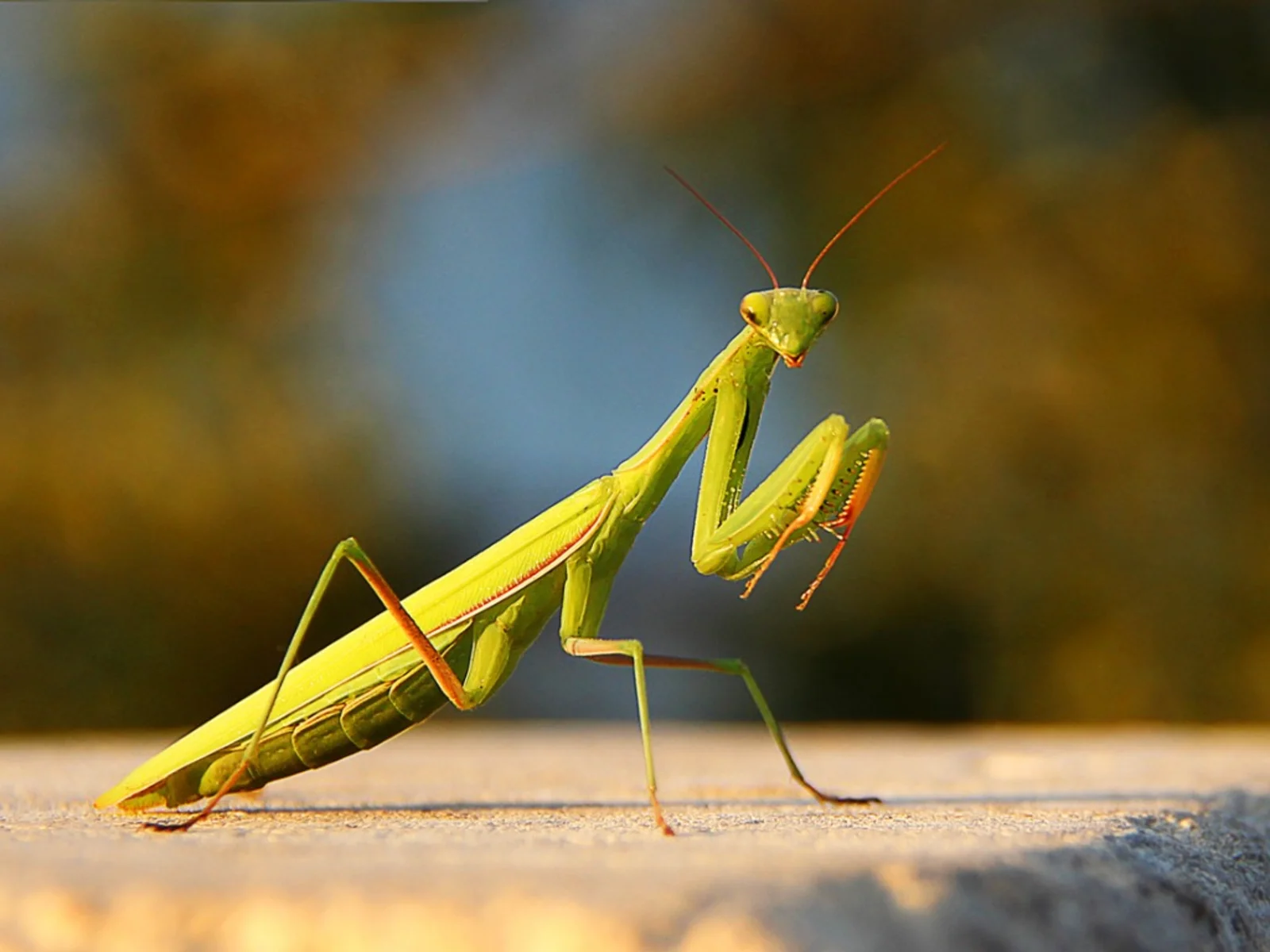
Mantises, also known as praying mantises, are fascinating insects that have captured the curiosity and admiration of nature enthusiasts for centuries. These unique creatures belong to the order Mantodea and are known for their distinctive praying posture and carnivorous feeding habits. With their elongated bodies, bulging eyes, and spiky forelegs, mantises are often considered one of the most intriguing specimens in the animal kingdom.
You may have come across these curious insects in your garden or while exploring nature trails, but how much do you really know about them? In this article, we will uncover 15 fascinating facts about mantises that will expand your knowledge and appreciation for these remarkable creatures. From their incredible hunting abilities to their unique reproductive behaviors, get ready to dive into the world of these amazing insects as we unveil the secrets of the mantises.
Key Takeaways:
- Mantises are skilled hunters with incredible camouflage abilities, unique vision, and lightning-fast hunting techniques. They play a crucial role in ecosystems by controlling insect populations and are truly remarkable creatures of nature.
- With their fascinating courtship rituals, patience, and agility, mantises are captivating insects that never cease to amaze. Their ability to mimic flowers and their important ecological role make them truly remarkable creatures worth appreciating.
Mantises are Master Predators
Mantises are skilled hunters and primarily feed on other insects. They have evolved to be extremely effective predators, using their powerful front legs and sharp spines to catch and hold their prey.
Incredible Camouflage Abilities
One of their most remarkable features is their ability to blend seamlessly with their environment. Many species of mantises have evolved unique body shapes and color patterns that help them mimic leaves, twigs, or even flowers, acting as the perfect camouflage.
Mantises Have Unique Vision
Mantises have large, compound eyes that provide them with exceptional vision. They can track movement and have a wide visual field, making it easier for them to spot potential prey.
Fascinating Courtship Rituals
During the courtship process, male mantises perform intricate dance-like movements to impress females. In some cases, the female may even devour the male after mating. This behavior is known as sexual cannibalism.
Mantises Are Masters of Patience
Mantises are known for their incredible patience. They can remain perfectly still for hours, waiting for an unsuspecting insect to come within striking distance.
Exceptional Hunting Technique
When the moment is right, mantises strike with lightning-fast speed, capturing their prey with their specialized front legs. They are so quick that they can often catch flying insects in mid-air.
A Wide Range of Species
There are over 2,400 species of mantises found worldwide, inhabiting various habitats from tropical rainforests to temperate regions.
Mantises Have Excellent Rotational Ability
Mantises have an incredible ability to rotate their heads almost 180 degrees. This flexibility allows them to have a wider field of vision and better track their surroundings.
Long and Graceful Appendages
Mantises have long and slender front legs that are equipped with sharp spines. These specialized appendages are used for capturing prey and maintaining a firm grip.
Incredible Egg-Laying Techniques
Females carefully deposit their eggs in a protective case called an ootheca. The ootheca acts as a shield, safeguarding the developing eggs until they hatch.
Mantises Undergo Incomplete Metamorphosis
Unlike butterflies or beetles, mantises undergo incomplete metamorphosis. This means that the young nymphs closely resemble the adult mantises but are smaller in size.
Impressive Ability to Rotate While Molting
During the molting process, mantises shed their old exoskeleton to make way for a larger one. They can rotate their bodies while molting, making it easier to free themselves from their old skin.
Some Mantises Mimic Flowers
Several species of mantises have evolved to mimic flowers to attract prey. They adapt their appearance and behavior to imitate the characteristics of a specific flower, luring unsuspecting insects into their grasp.
Mantises Are Highly Agile
Mantises have excellent agility and can quickly maneuver through the foliage or their surroundings. Their keen sense of balance helps them navigate complex environments with ease.
Important Ecological Role
Mantises play a crucial role in maintaining the balance of ecosystems by controlling populations of insects. They help keep pest populations in check and contribute to the overall health of the ecosystem.
As you can see, mantises are truly remarkable creatures with a wide range of fascinating characteristics. From their incredible hunting abilities to their impressive adaptations, these intriguing insects never cease to amaze us. So, the next time you come across a praying mantis, take a moment to appreciate the wonders of nature.
Conclusion
Mantises are truly fascinating creatures with a variety of interesting facts. From their unique hunting techniques to their impressive camouflage abilities, there is always something new to learn about these remarkable insects. Whether you’re captivated by their striking appearance or intrigued by their complex behaviors, exploring the world of mantises can be an exciting adventure. Armed with this newfound knowledge, you’ll be able to appreciate and admire these incredible creatures in a whole new way.
FAQs
1. How long do mantises live?
Mantises typically live for about 1 year. However, some species have been known to live up to 2 years in favorable conditions.
2. Do mantises bite?
Yes, mantises are capable of biting, but they rarely bite humans unless provoked or threatened. Their bites are usually not harmful and may only cause minor discomfort.
3. Are mantises harmful to plants or crops?
Mantises are beneficial insects as they feed on other insects that can be harmful to plants or crops. They are natural pest controllers and can help in keeping pest populations in check.
4. Can mantises fly?
Yes, most mantises have wings and are capable of flying. However, not all species are strong fliers, and their flying abilities can vary.
5. How do mantises reproduce?
Mantises reproduce through sexual reproduction. The female lays eggs after mating, and these eggs hatch into tiny nymphs. The nymphs undergo several molts before reaching adulthood.
6. Are mantises aggressive?
Mantises are carnivorous and can exhibit aggression when it comes to hunting prey. However, they are generally not aggressive towards humans and prefer to avoid confrontation.
7. Are mantises harmful to humans?
No, mantises are not harmful to humans. They are not venomous, and their bites, if they occur, are usually harmless.
8. Can mantises change color?
Yes, some species of mantises have the ability to change color. This helps them blend in with their surroundings and enhances their camouflage abilities.
9. How do mantises catch their prey?
Mantises use their powerful front legs, equipped with spines and hooks, to catch and hold their prey. They are ambush predators and strike at lightning speed to capture insects and small animals.
10. Can mantises be kept as pets?
Yes, mantises can be kept as pets. However, they require specialized care and a suitable environment to thrive. It’s important to research the specific needs of the species before considering them as pets.
Mantises are truly captivating creatures, with their incredible hunting skills, unique vision, and fascinating courtship rituals. These masters of camouflage and patience play an important role in the ecosystem. If you've enjoyed learning about these amazing insects, why not explore the world of insect keeping? Discover the joys of caring for stick insects, praying mantises, and other fascinating species. Keeping insects as pets can be a rewarding hobby, offering a glimpse into the hidden lives of these often-overlooked creatures. So why not embark on a new adventure and learn more about the wonderful world of insect keeping?
Was this page helpful?
Our commitment to delivering trustworthy and engaging content is at the heart of what we do. Each fact on our site is contributed by real users like you, bringing a wealth of diverse insights and information. To ensure the highest standards of accuracy and reliability, our dedicated editors meticulously review each submission. This process guarantees that the facts we share are not only fascinating but also credible. Trust in our commitment to quality and authenticity as you explore and learn with us.


